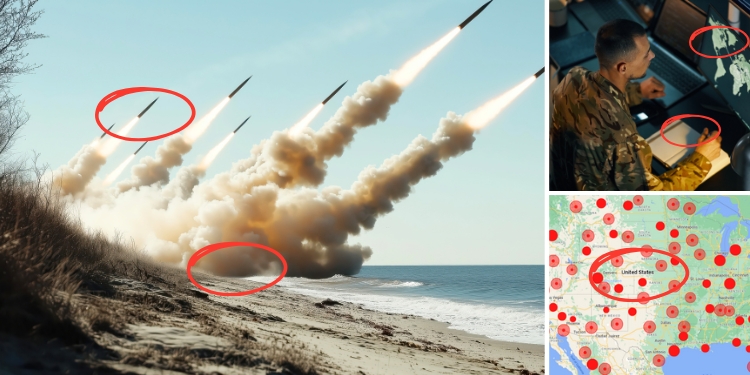You can write volumes on the state of the world, but one has only to look at the state of the world to see what algorithms are doing.
Algorithms form an increasingly important part of our daily lives, even if we are often unaware of it.
Most of us have no idea what they are — or how we’re being influenced by them.
They have become instrumental in our everyday lives.
Algorithms are making hugely consequential decisions in our society on everything from medicine to transportation to welfare benefits to criminal justice and beyond. Subtly shifting the way our society is operating.
We can see them at work in the world. We know they’re shaping outcomes all around us.
Are we making a mistake by handing over so much decision-making authority to these programs?
This paradox—that the internet is both saviour and executioner of democracy is part of a massive unfolding social experiment.
The proliferation of algorithms is eroding our ability to think and decide for ourselves. They are turning people into products, and they don’t even realize it.
Billions of people around the world are interacting with these technologies, which is why the tiniest changes can have such a gigantic impact on all of humanity.
We will blindly follow them wherever they lead us. There is no one assessing whether or not they are providing a net benefit or cost to society.
WE DON’T HAVE TO CREATE A WORLD IN WHICH MACHINES ARE TELLING US WHAT TO DO OR HOW TO THINK, ALTHOUGH WE MAY VERY WELL END UP IN A WORLD LIKE THAT WHERE ALGORITHMS DECIDE WHO LIVES OR WHO DIES.
How you see the world matters.
————————
Beliefs are the things we hold true, regardless of whether we have any proof of their objective truth.
You see, in time, beliefs become labels.
We plaster them on our foreheads and use them to justify our action or inaction. That belief will then drive how you behave as you interpret it as being damning or empowering.
We all would be a lot happier if everyone else around us had the same beliefs as we do, or at least, that they would not challenge us on them. Of course, that is impossible, and this is precisely what fuels most of the world’s conflicts.
And here comes the kicker:
You can decide the direction you take. Your beliefs do not control you, so long as you become self-aware and take charge of your life. Or maybe if you assume everything will fall apart, you never get disappointed.
So, herein lies the persistent conflict of our society:
All of us are driven by our life experiences and by merely being human, but the creeping influence of algorithms in our lives are fucking up the world. We’re increasingly moving towards government by algorithm.
Automated systems are being rolled out with little transparency or public debate, and risk exacerbating existing inequalities.
The algorithm takes the biases and prejudices of the real world and ‘bakes them in’, and gives them a veneer that makes it seem like a policy choice is actually neutral and technical. But it isn’t,”
The problem is, both beliefs and values have strong momentum and seem glued to our character.
How do these beliefs played out in real life?
Are we just becoming throwaway survival machines, following our genetic and neurological programming in an indifferent world?
I believe that human life and the world mean much more than that.
There’s beauty everywhere—we have only to open our eyes to see it.
——————–
When it comes to climate change, the science is settled.
When it comes to technology its all together the opposite.
The sobering truth is that both the climate and technology are out of control.
Given the difficulty of getting the human brain or our political system to tackle anything beyond immediate crises, our attempts to rectify what’s wrong are usual puny compared to what’s really needed.
If you listen to our politicians, there is a strong consensus on climate change.
It consists of four parts.
First, carbon emissions are causing significant changes to our climate. Second, we need to take urgent action to reduce those emissions, including reaching net zero by 2050. Third, we have already made good progress in reducing emissions. And fourth, the steps we need to take to reduce emissions further will also bring many positive benefits for society.
We have a pretty clear understanding of the threat climate change poses to us, our children and our grandchildren. We are already being forced to cope with more droughts, more floods, more extreme storms. At the same time, we have in our arsenal effective policies that are difficult for rational people to demagogue as crippling to the economy or as a subversion of our cherished way of life.
So why does climate misinformation continue to spread online and in our media?
Dire warnings of the looming climate disaster may just make people throw up their hands in despair, sink into denial, or dig their heels in deeper against government action.
Instead, we seem to firmly believe that climate solutions inevitably mean more government, higher taxes and less freedom — and thus are threats to all our core values and identity.
———————-
Technology’s benefits are numerous in all fields, however in the system’s that effect our daily lives it is becoming a threat to our core values, through the use of algorithms. Pushing us like a digital slave army to mindlessly, unwittingly and unwillingly livestream our digital existences into the commercial coffers of companies that see us as nothing more than walking dollar signs.
Examples:
Every time you pick up your smartphone, you’re summoning algorithms. At this point, they are responsible for making decisions about pretty much every aspect of our lives.
The right to an explanation of an algorithm-generated decision does little to fix “systemic injustices” Getting an explanation but no democratic say in how systems work is like getting a privacy policy without a ‘do not consent’ button.
Deciding who gets access to welfare. Using automated interviews with a virtual border guard, based on “deception detection algorithm. Using algorithms to model when and where crime will happen — an area known as predictive policing — is on the rise. Using algorithms to come up with a personality assessment. Having your credit rating scored decided by an algorithm based on questionable data.
Grading algorithm does not not relied solely on automated means. Substituting a mathematical approach for human judgment does not automatically make it fair.
Profit seeking algorithms. Market making algorithms. Execution algorithms Scheduled algorithms. Participation algorithms. VWAP and TWAP algorithms are time-slicing algorithms. Liquidity-seeking algorithms (a.k.a. opportunistic algorithms) Arrival price algorithms seek to trade close to market prices.
Recent developments in algorithmic trading include clustering and high-frequency market forecasting are playing a central role in finance.
The worst-case scenario is that we fail to disrupt the status quo, in which very powerful companies develop and deploy AI in invisible and obscure ways.
We have no right to see all of the data these companies collect about us, no right to get a percentage when they resell our data without our knowledge or informed consent, no right to ask them to stop. We are for all purposes indentured servants, offered free digital room and board in return for paying with our digital souls and our real-world time.
Social media companies have managed only to create a toxic brew of horrific hate speech that they cannot seem to get rid of.
Algorithms really are so powerful that a few lines of code can push us into any behaviour.
The right message targeted at the right time could mass convert the entire population of a country into mindless zombies who would readily convert even their most deeply held beliefs in an instant.
When it is obvious to all is that the world is changing, responding faster than expected to Technology’s
Why are we being such idiots?
What gives? It’s not that we are stupid or blind our core values are under attack.
If everything is a core value, then nothing is really a priority.
In this age where technology is dominant, core values may seem like something from the past. So core values may not seem like they have a place.
All of this data is used first and foremost to make money from us.
There is a really frustrating lag between what AI is capable of and what it’s legislated for.
Core values are the foundational beliefs held by an individual or an organisation.
Anyone can go to Google and search the meaning of core values,. There are another thing on your to-do list that you don’t have time for, but what about the bigger picture?
When you hear about core values, what comes to mind?
Core values make the biggest difference between successful and failure.
There are more than just words on a wall — it’s how you behave. It’s who you are at your core.
Everyone knows their role, what is expected of them, and they are empowered to act in accordance with their core values.
Once upon a time voting or making decisions in alignment with your core values were the foundation of who we are as individuals. Not any longer with Algorithms running social media.
——————–
To look at it simply, culture is just a collection of people. It is the environment created by the cumulative behaviour of the people.
We all have things that we value deeply, whether we realize it or not.
You remember values, don’t you? You know, those moral thoughts and behaviours we used to hold dear, like decency, civility, honesty and respect, as well as caring, optimism, empathy, and tolerance?
They were once a beacon of idealism. Rewarding behaviour based on them, and align all of our decisions with them.
Core values represent the lens which we view the world. They must be embedded in everything we do.
These “alt” credos and codes of behaviour are the trademarks of the incivility we witness on a daily basis, often expressed with rancour and rage. They have become commonplace on television, in social media and in everyday life. Of even more concern is that these new “moral standards” serve as models of behaviour for our impressionable children and youth.
Hold one another accountable for staying aligned with the values—it’s better not to profess any values at all.
———————
Education and knowledge were cornerstones of our achievement.
We are now living in society that at large looks to social media /television and film personalities for political advice.
You must ensure they are accurate, meaningful, relatable and fully operationalized.
If we continue our descent into callousness, selfishness and hostility, we negatively impact and harm the quality of our lives. We could lose sight of our basic human values and diminish the essence of what MAKES THE WORLD BEAUTIFUL.
Achieving a more transparent and less manipulative media may well be the defining political battle of the 21st century.
Just as we are using our formidable intellect and creativity to reduce our carbon footprint, we can similarly mobilize our resources to improve our emotional footprint, or how we treat and affect each other.
Values are the criteria by which individuals judge ideas, objects, people, situations, and actions as good, worthwhile, desirable, wrong, worthless, or undesirable
.Values are individuals’ embedded abstract motivations. They guide individuals to understand, justify, and explain norms, attitudes, and actions. One of the limitations of examining values is that values cannot be generalized because they vary between a person and another, culture and another, society and another, even a country and another, thus scrutinizing values will be different in the future.
Core values can be only be fostered in Education, not in schools but with compulsory NATIONAL SERVICE.





